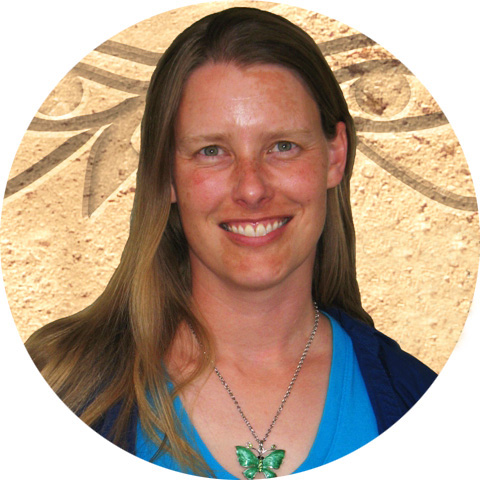Ideas are everywhere, including in our own lives. Of course, even the most exciting events may lack important story qualities such as character arcs and strong plots. Still, personal and family experiences can provide the raw material to be molded into publishable stories and articles.
Amy Houts’s book Down on the Farm (Stone Arch), about a girl on a farm vacation who wants to ride a horse but must do chores first, was inspired by her experiences, though not a specific episode. “I was one of those horse-crazy girls,” she says. “I knew how a girl could long to ride a horse.”
Sometimes the smallest nugget can inspire a story. Susan Uhlig says, “My teen daughters and friends went on a mission trip to do a building project. The man overseeing the project was disappointed that there were no boys. I played the writer game of ‘what if?’ What if the man wouldn’t let the team stay because they were all girls? That developed into a short story very easily – what he would say, my main character girl would do, how the problem would be solved, etc.” The story sold to Brio.
Personally, I sold a story to Highlights based on the experience of finding frogs all over my neighborhood after a rainstorm. They also bought a historical story about the Mayan ballgame. That story, and my Mayan historical novel The Well of Sacrifice, were inspired by visiting Mayan ruins in Mexico and Central America.
Realistic, Not Real
Sometimes real life translates well into fiction – though a twist may make it more fun for children. Leslie Helakoski says, “My picture book, Big Chickens (Dutton Juvenile), is about all the things I was afraid of when young and I’d go into the woods with my brothers and sisters. I just turned us all into chickens and played with the language.”
Caroline Hatton drew on school and home memories of growing up in Paris for her middle-grade novel, Véro and Philippe (Cricket Books). Yet she did not simply write a memoir. “I wanted to write about a pet snail because I kept one in a shoebox in my family’s apartment in Paris. But in my real life, my big brother left me and my pet snail alone – not much of a story, is it? So in the book, I made the brother threaten to eat the snail, as escargot.”
Characters and outcomes may also change, Hatton points out. “My brother rigged a thing to scare me in the middle of the night. But in the book, I swapped roles, and it’s the little sister who does it to her big brother. Sharing this with kids makes them howl with the pleasure of revenge.”

Houts adds, “Most of the time I have to twist the reality of an experience so my story can include all the elements of good storytelling: a contrast of characters; a goal the main character strongly desires to reach; and believable obstacles the main character needs to overcome to reach her goal. Time needs to be cut down to a day or two. That condenses the action and makes the story more focused.”
Author Renee Heiss says, “Use your life story as the skeleton, and then flesh it out with period details, colorful dialogue, and tons of sensory imagery to place your young readers into the time period and setting. It’s not enough to tell what happened; you must show your readers your story and immerse them into your life as if they were a sibling growing up with you.”
Asking friends and family members to share stories can provide ideas, while letting you turn the story into your own creation. Uhlig didn’t witness the mission trip firsthand. “That freed me up to create problem, action, dialogue, etc. without being stuck on what really happened,” she says.
You can “borrow” stories from history and the news as well. I found an interesting tidbit in a historical book about Washington state. A teenage boy had met bank robbers in the woods, and for some reason he told nobody about them. Why? This question, and my imagine answers to it, became my YA survival suspense Bandits Peak.
A Variety of Gems
Even if a specific episode doesn’t make for a good story, the emotions you experience can give power to fiction. Highlights for Children Senior Editor Joëlle Dujardin says, “Past events that stick with you are probably memorable in large part due to your emotional response to them. Try to capture some of this feeling in your story without tying yourself to the events as they actually happened. For example, you might use your feelings about working with a difficult colleague to imagine being paired with a difficult classmate for a science project. Conveying genuine emotions will make your story feel richer.”

Houts shares an example. “Because I had experienced the setting (a farm) and the action (chores/riding) I could write authentically. But there was something else about Emily’s character that came directly from me and that was impatience. Impatience worked well in this story because Emily’s goal isn’t reached until close to the end when they finally get to ride.”
“Drawing on real life is a great way to create believable settings, characters, and emotions in fiction,” Dujardin adds. “Using unusual details from memory – the scent of Grandma’s house, a particular pattern of wallpaper, the emotions related to standing up for a friend – can be a powerful way to give a story a feeling of authenticity.”
Uhlig advises, “What happened to you is background material. You can use the setting and specific details, but the resulting story will not be a record of your experience. Instead, think about what you’d like readers to get out of a similar story. Focus on creating a problem and solution that shows that.”
Finding the Seeds of Stories
- What’s the scariest thing that happened to you as a child? The most exciting? The funniest?
- What’s the most fun you ever had as a child? What were your favorite activities?
- What was the hardest thing you had to do as a child?
- What interested you as a child?
- When you were a child, what did you wish would happen?
- What interests them?
- What frightens them?
- What do they enjoy?
- What challenges do they face?
- What does their life involve – school, sports, family, religion, clubs?
- What hobbies or interests do you have that might interest child?
- What jobs or experiences have you had that make a good starting point for an article or story?
- Do you know about other cultures, or a particular time period?
By mining real-life experiences, authors can find many gems of setting, character, plot, theme, or emotion that make for powerful fiction or nonfiction.



 Chris Eboch
Chris Eboch 